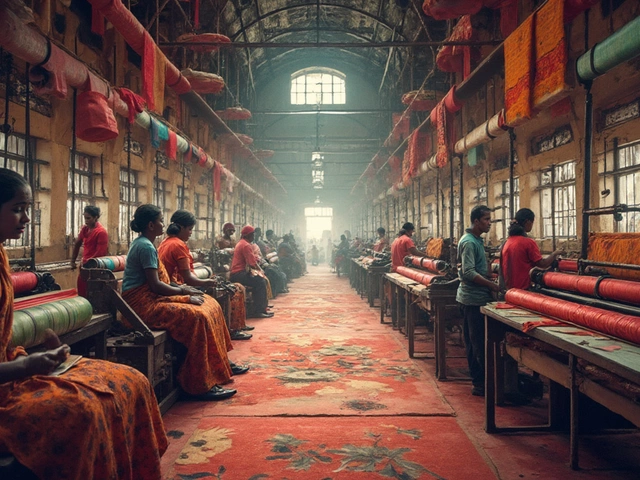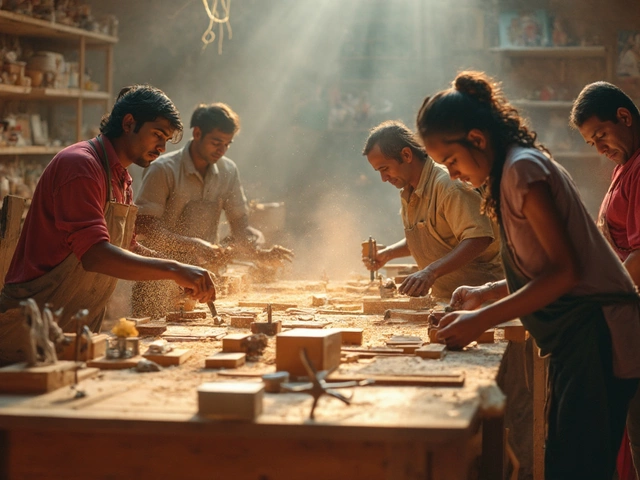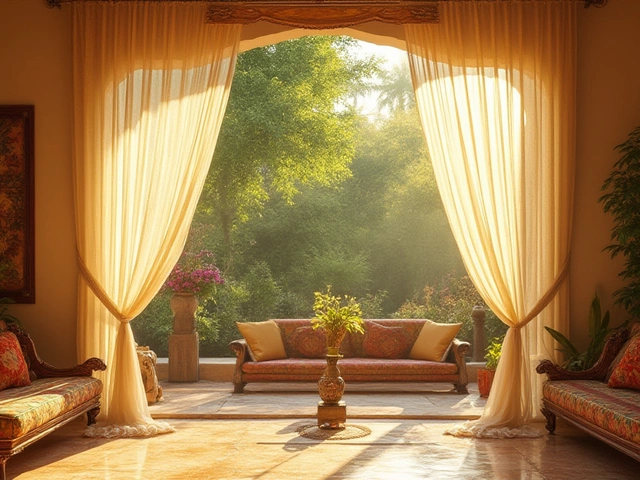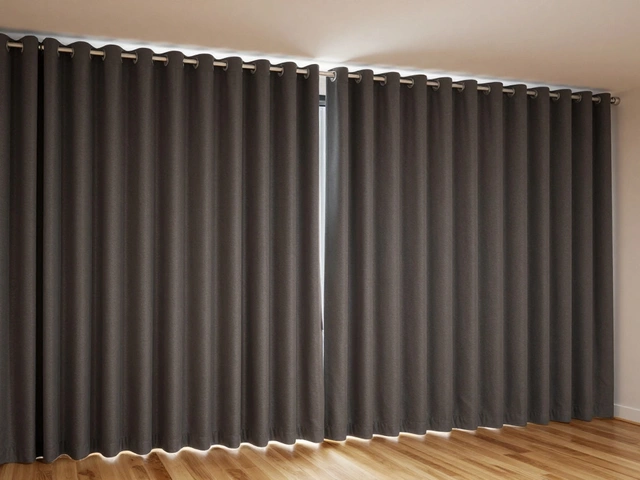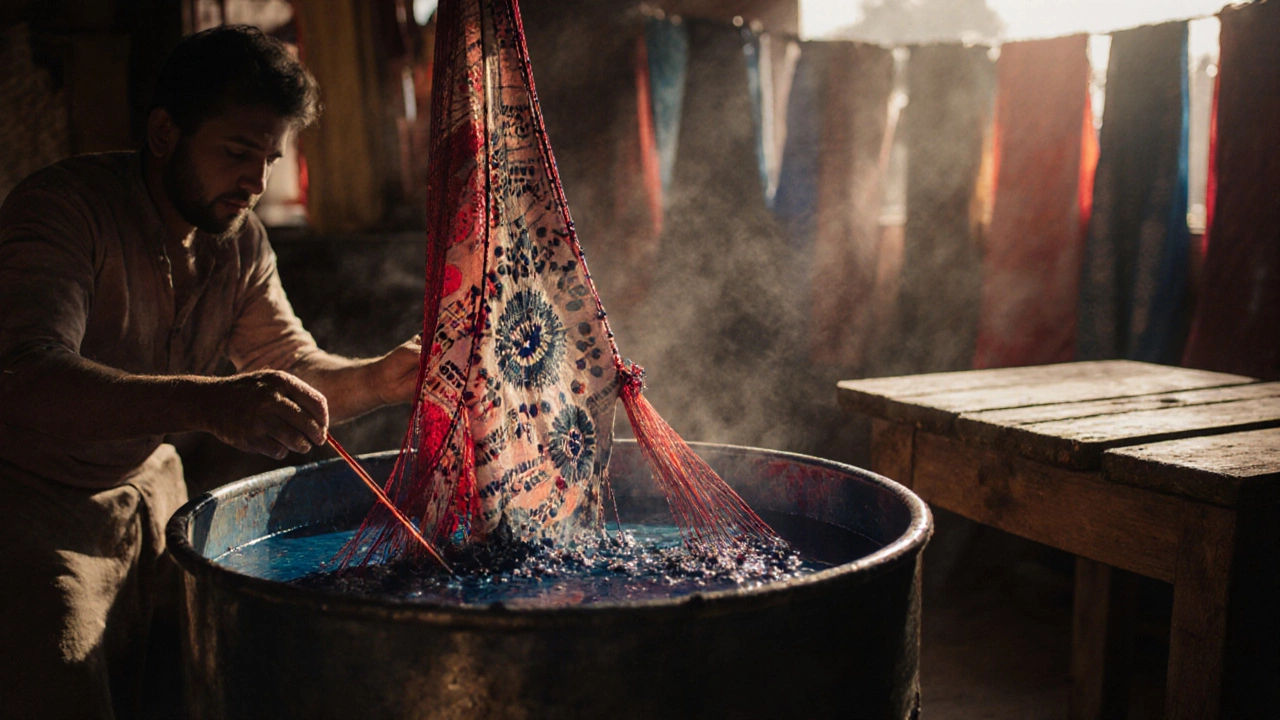
Gujarat isn’t just known for its vibrant festivals or bustling cities-it’s one of India’s oldest and most respected centers for handwoven textiles. If you’ve ever seen a brightly colored scarf with tiny dots, a silk sari with intricate geometric patterns, or a bedspread stitched with mirror work, you’ve likely encountered fabric made in Gujarat. The state’s cloth isn’t just clothing; it’s cultural heritage stitched into every thread.
Bandhani: The Art of Tied and Dyed Fabric
Bandhani, also called Bandhej, is Gujarat’s most recognizable textile. The word comes from the Sanskrit word ‘bandhna,’ meaning ‘to tie.’ Artisans tie tiny portions of fabric with thread before dipping them into natural dyes. Each knot resists the color, creating a pattern of dots. When untied, the fabric reveals a stunning mosaic of circles-often arranged in floral or wave-like designs.
Women in rural Gujarat have passed down this technique for generations. The most prized Bandhani pieces are made from fine silk or cotton, with colors like deep red, mustard yellow, and indigo. You’ll see these fabrics worn during weddings, especially in Saurashtra and Kutch. A single Bandhani dupatta can take anywhere from three days to three weeks to complete, depending on the density of knots. Some artisans tie over 10,000 knots per meter.
Patola Silk: The Double Ikat Masterpiece
If Bandhani is about tying, Patola is about precision. Patola silk comes from Patan, a town in North Gujarat, and it’s one of the most expensive handwoven fabrics in the world. What makes it unique is double ikat-both the warp and weft threads are tie-dyed before weaving. This means the pattern only emerges when the threads are perfectly aligned on the loom.
Creating a single Patola sari can take six months to a year. The process requires extreme skill: weavers must calculate thread tension, dye shades, and alignment down to the millimeter. Mistakes are irreversible. Traditional Patola designs include peacocks, elephants, and complex geometric motifs. Historically, these saris were worn by royalty and are still considered heirlooms. A genuine Patola silk sari today can cost between ₹1.5 lakh and ₹5 lakh ($1,800-$6,000 USD).
Kutch Embroidery: Mirrors, Threads, and Stories
In the arid region of Kutch, embroidery isn’t just decoration-it’s storytelling. Women from communities like the Rabari, Jat, and Bhanushali use bright threads and tiny mirrors to create intricate patterns on cotton and wool. Each stitch carries meaning: zigzags represent water, triangles stand for mountains, and circles symbolize the sun.
What makes Kutch embroidery stand out is the use of mirrors, or ‘abla.’ These tiny reflective discs are sewn into the fabric to ward off evil spirits, a belief rooted in local folklore. The embroidery is used on everything from shawls and bags to wall hangings and bedspreads. The government has recognized this craft as a Geographical Indication (GI) product, protecting its origin and authenticity.
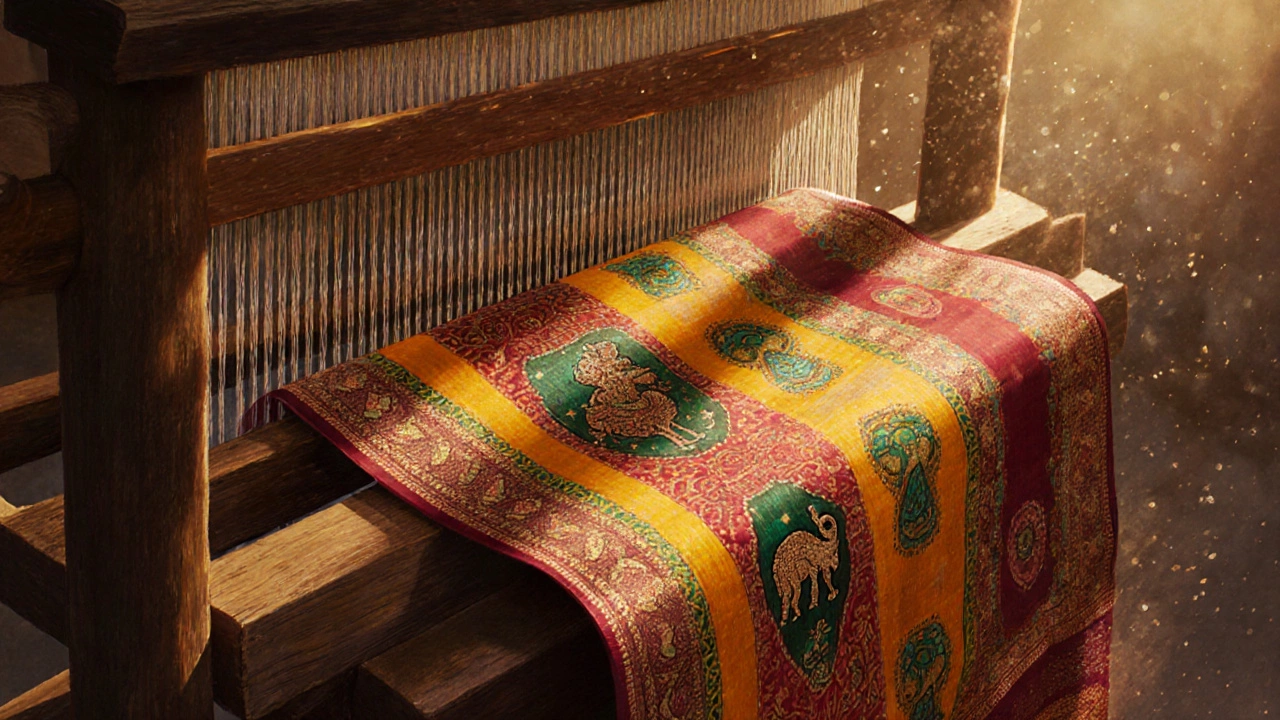
Chanderi and Ajrakh: Less Known But Just as Rich
While Bandhani and Patola get the spotlight, other Gujarat fabrics hold deep cultural value. Chanderi, often confused with Madhya Pradesh’s version, has a Gujarat variant made with fine cotton-silk blends. It’s lightweight, slightly sheer, and perfect for summer wear.
Ajrakh is another gem. Originating in the Kutch and Saurashtra regions, Ajrakh printing uses natural dyes like indigo, madder root, and pomegranate rind. The process involves block printing with wooden stamps and multiple rounds of washing and dyeing-sometimes up to 16 stages. The result is deep blue and crimson patterns with symmetrical, repeating motifs. Ajrakh is worn by men and women alike, especially during religious festivals.
Why These Fabrics Still Matter Today
These textiles aren’t museum pieces. They’re alive. Over 120,000 families in Gujarat still depend on handloom weaving for their livelihood. Organizations like the Gujarat State Handloom and Handicrafts Development Corporation help weavers access markets, fair wages, and modern tools without losing traditional methods.
Designers from Mumbai to New York now collaborate with Gujarat artisans. You’ll find Bandhani prints on modern kurtas, Patola motifs on luxury scarves, and Kutch embroidery on tote bags sold internationally. This fusion keeps the craft relevant without diluting its roots.
But challenges remain. Younger generations are moving to cities. Power looms produce cheaper imitations that flood markets. Genuine handwoven fabric takes time-and time is expensive. Buying authentic Gujarat cloth isn’t just about owning something beautiful; it’s about supporting a centuries-old ecosystem.
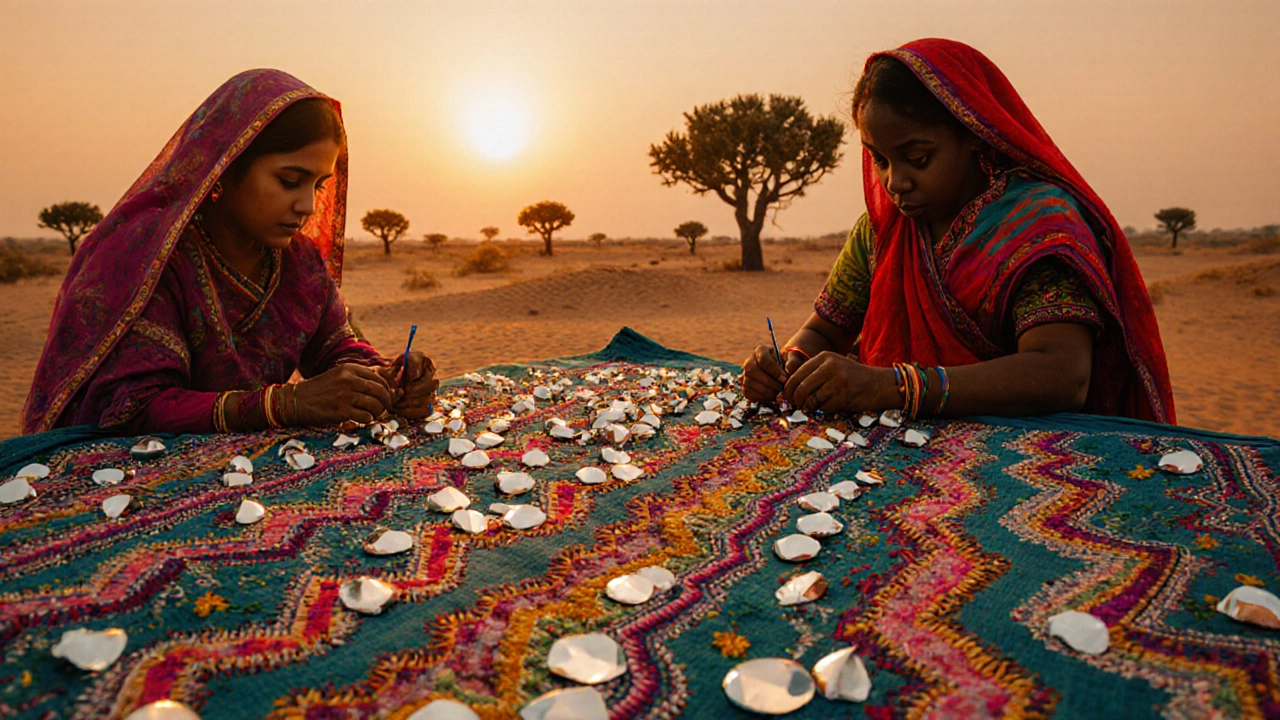
How to Spot Real Gujarat Cloth
Not everything labeled ‘Gujarat fabric’ is handmade. Here’s how to tell the difference:
- Check the backside. Handwoven fabrics show the same pattern on both sides. Machine prints look different on the reverse.
- Look for slight imperfections. Handmade pieces have minor inconsistencies-uneven stitches, faded spots, or thread ends. These aren’t flaws; they’re proof of human touch.
- Smell the fabric. Natural dyes have an earthy scent. Synthetic dyes smell chemical or plastic-like.
- Ask for the maker’s name. Reputable sellers will tell you which village or community made the piece.
- Price matters. If a Patola silk sari costs less than ₹50,000, it’s likely machine-made.
Where to Find Authentic Gujarat Textiles
If you want to buy directly from artisans:
- Patna Bazaar, Ahmedabad - A hub for Bandhani and Ajrakh prints.
- Patan Handloom Market - The only place to buy genuine Patola silk from original weavers.
- Kutch Craft Village, Bhuj - A cluster of embroidery cooperatives where you can watch artisans at work.
- Government emporiums like Gujarat Haat - Fair-trade outlets with certified handloom products.
Online, look for platforms like Handloom Mark or India Handloom Brand, which verify authenticity through digital tags and artisan profiles.
What is the most famous cloth from Gujarat?
The most famous cloth from Gujarat is Bandhani, known for its tied-and-dyed dot patterns. However, Patola silk from Patan is equally renowned for its intricate double ikat weaving and is considered one of India’s most luxurious textiles.
Is Patola silk only made in Gujarat?
Yes, authentic Patola silk is made only in Patan, Gujarat. The double ikat technique is so complex and specific to this region that no other place in India reproduces it exactly. Other areas may make ikat fabrics, but only Patan produces true Patola.
How long does it take to make a Bandhani dupatta?
A simple Bandhani dupatta can take 3 to 7 days to complete, depending on the number of knots. More detailed designs with over 5,000 knots may take up to three weeks. Each knot is tied by hand, and the dyeing process requires multiple dips and drying cycles.
Can you machine-make authentic Gujarat cloth?
You can machine-print patterns that look like Bandhani or Ajrakh, but you can’t replicate the true texture, depth, or craftsmanship. Machine-made versions lack the slight irregularities that prove handwork, use synthetic dyes, and don’t have the same durability or cultural value. Genuine Gujarat textiles are always handwoven or hand-dyed.
Why is Kutch embroidery so colorful?
The bright colors in Kutch embroidery reflect the region’s desert landscape and cultural beliefs. Vibrant reds, oranges, and greens symbolize life, energy, and protection. The mirrors sewn into the fabric are believed to reflect negative energy. These colors also help identify the wearer’s community-each tribe has its own signature palette and stitch patterns.
Are Gujarat textiles expensive?
Yes, authentic handwoven Gujarat textiles are expensive because they’re labor-intensive. A single Patola sari can take over a year to make and costs upwards of ₹1.5 lakh. Even a small Bandhani dupatta made by hand can cost ₹3,000-₹8,000. The price reflects hours of skilled labor, natural dyes, and cultural heritage-not just the fabric itself.
What to Do Next
If you’re drawn to these fabrics, start small. Buy a Bandhani scarf or a Kutch embroidery pouch. Learn the story behind it. Ask the seller where it came from. When you wear it, you’re not just wearing cloth-you’re wearing history. And by choosing authentic pieces, you help keep a 500-year-old tradition alive.
